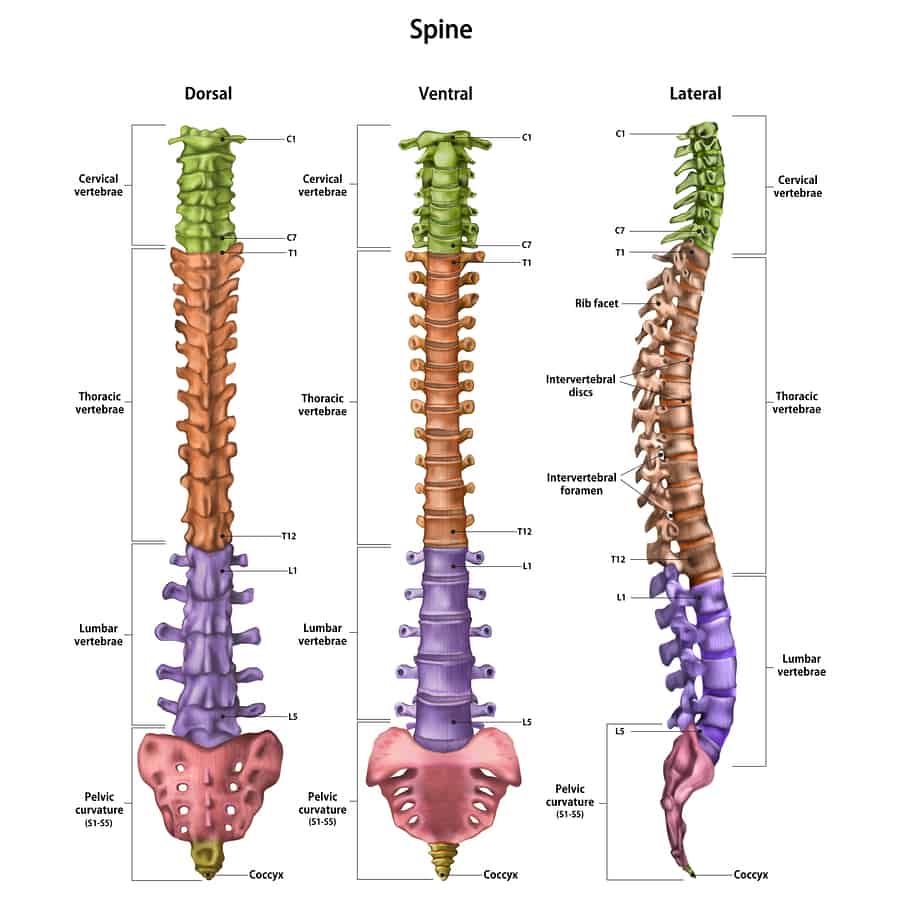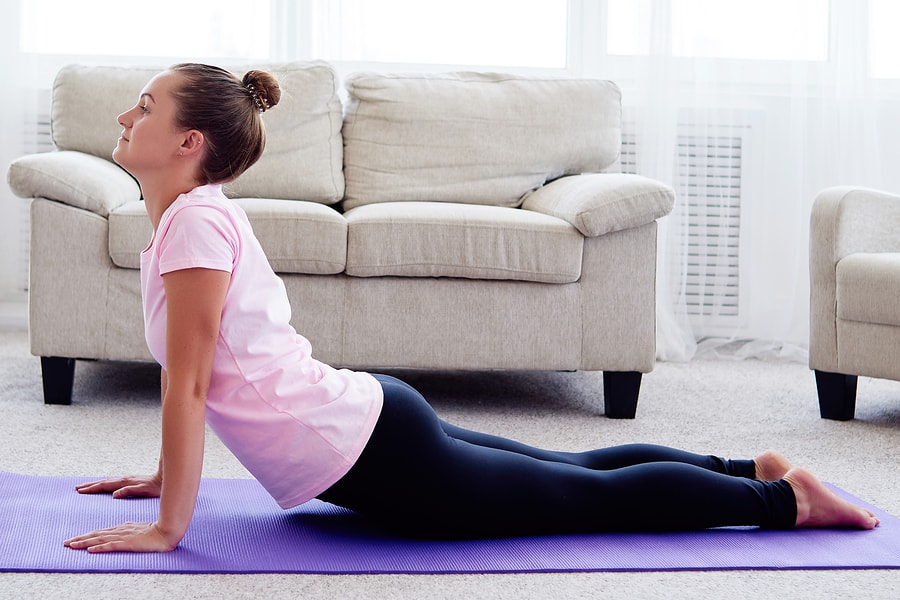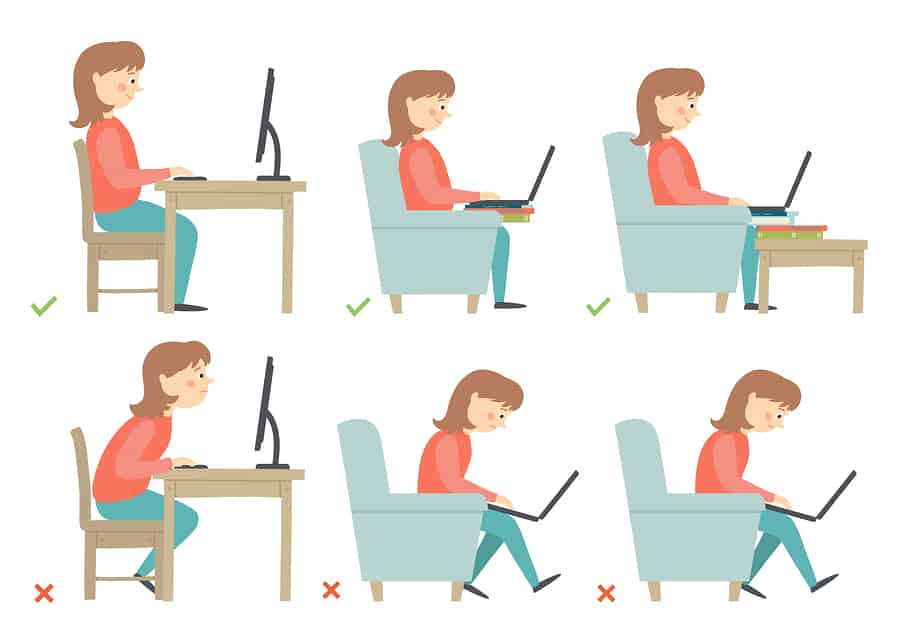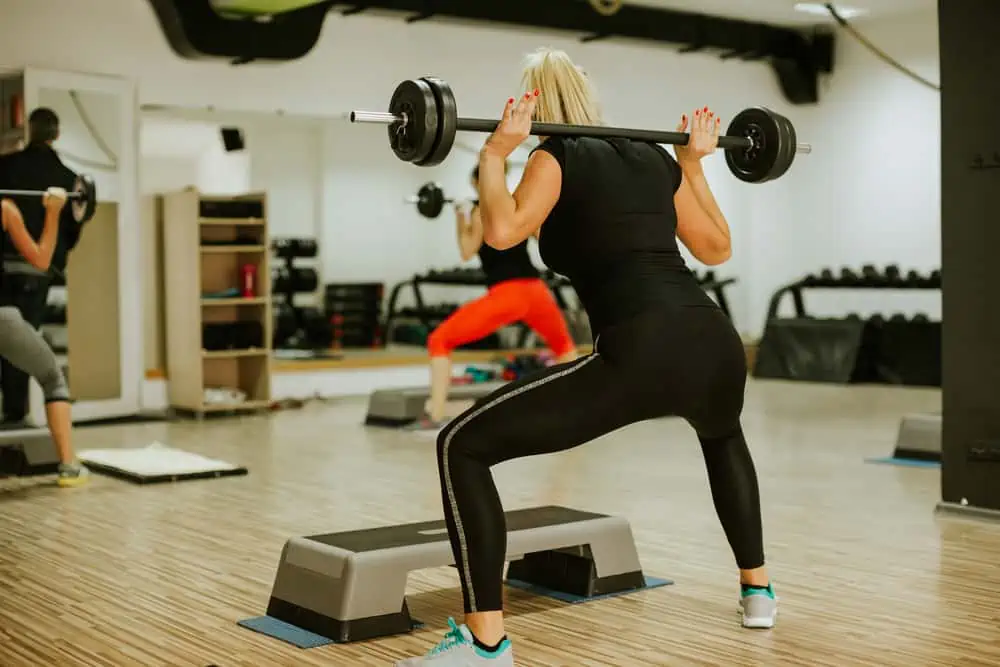This post may contain affiliate links. If you click through a link and make a purchase, I may receive a commission at no additional cost to you. As an Amazon Associate, I earn from qualifying purchases. Read the full disclosure here.
Lower back pain is a real buzzkill.
Left unchecked, it can wreak havoc on anyone’s quality of life.
It’s estimated that as many as 60-85% of people will have lower back pain at some point in their life.
Low back pain is also more common in those who do not have a regular exercise program, among other risk factors.
Not long ago, the treatment for almost any injury was rest.
While in acute phases, this may be the case; at some point, you have to start moving again to resume a normal life full of activities you love. Moving in the right ways can help you speed up your recovery.
This often brings about the age-old question:
“I have lower back pain. What exercise should I do?”
That seemingly casual, yet fishing for pro tips at a cocktail party (totally kidding, I don’t go to cocktail parties) is an incredibly loaded question.
Cue the avalanche of follow-up questions because there’s no way to adequately answer that in the absence of so many details.
Keep reading to learn how to exercise safely with lower back pain and how to take an active role in your health and fitness.
Disclaimer: This content is for educational purposes and is not medical advice. Read the full disclaimer.
Lower back pain is complicated
First things first, there are a lot of different kinds of lower back pain.
Different diagnoses require different approaches, and the wrong exercises could leave you in more pain.
So when Joe-Schmoe tells you all about his back pain, including all his exercises and the late-night infomercial gimmick that changed his life, take it with a grain of salt.
When you have low back pain, it seems like everybody’s a doctor (or a salesman).
Let’s take a look at the shortlist of common musculoskeletal issues that can cause lower back pain (and accompanying issues):
- Strains and sprains
- Muscle spasm
- Compensation for lack of muscle strength in another area, e.g., glutes, giving the perception of tight muscles
- Poor posture habits
- Lumbar bulging or herniated discs
- Sacroiliac (SI) joint issues
- Facet joint issues
- Arthritis
- Spinal stenosis
- Scoliosis
Notice that I didn’t list sciatica here?
That’s because sciatica is a symptom of inflammation and pain along the sciatic nerve. It doesn’t tell you why the nerve is inflamed. Sciatica itself is not a diagnosis.
There can be different sciatica causes, and it’s essential to be evaluated to get the proper treatment for your sciatica. Don’t miss What To Avoid When You Have Sciatica for all the details.
Which brings me to my next point…

Get your lower back pain evaluated
Don’t try to cure your back pain with some generic catch-all advice or something you read on a fleeting social media post.
Let me explain.
John has a disc bulge. Sally has an SI joint dysfunction. Both complain of “lower back pain.” Yet the treatment approaches and what exercises are safe will look different.
Get evaluated by your doctor and physical therapist to narrow down what you’re dealing with and get specific recommendations for you.
You need to know what you’re dealing with before you can start filtering your activities.
I highly suggest reading How To Prepare For Your First Physical Therapy Appointment for everything to know before you go (including the evaluation process and what questions to anticipate).

What exercises should I avoid with lower back pain?
Studies show exercise helps improve lower back pain. But that’s rather vague and the answer of “which exercises” will be different for each person.
A helpful question to consider is what positions or movements make the pain better and which make the pain worse.
This helps determine movements to promote and movements to avoid. If you continue to perform movements that aggravate your pain, you’re perpetuating the inflammatory cycle, working against your goal of feeling better.
A physical therapist will help you determine healthy ways for you to move and start feeling better.
Here are some other examples of exercises to avoid making lower back pain worse.
High impact exercise
High impact exercise translates more force through the body and can aggravate injured tissues.
Activities such as running, HIIT, martial arts, kickboxing, and certain sports, should be avoided to allow your body to heal.
Swap in low-impact workouts to stay moving and avoid prolonging your rehab.
Remember, low impact doesn’t mean low intensity. In this article, I’ll show you 18 low-impact workout alternatives to keep you moving.
Heavy weight lifting
If you’re accustomed to lifting heavy, this compression force through the spine can increase your pain.
Depending on your case, you may be able to continue some strengthening with lighter weights, but this is a conversation between you, your doctor, and your physical therapist.
Caution with core strengthening
Core exercises are often touted as a cure-all for lower back pain. Unfortunately, nice looking stomach muscles don’t guarantee a free pass from back pain.
Some exercises, such as sit-ups, are a poor choice for strengthening because many end up flexing the spine and substituting with the hip flexor muscles.
Also, core muscles don’t just refer to abdominal muscles. It includes the back, pelvic floor, and sometimes even the hips and shoulders.
No one’s core actually “turns off” and technically any compound exercise is also a core exercise.
Extreme spinal movements
Taking your back to the extreme (even in yoga) can make your pain worse.
Don’t work through pain
This may sound like a no-brainer, but the no pain no gain mentality continues to be a myth that just won’t die.
There will always be different sensations during exercise. Get in-tune with pain vs. sensation to avoid aggravating an already cranky area.
Monitoring pain and noting subtle changes can help you stop or modify an activity before it gets too severe.
What’s the best exercise for lower back pain?
Again, this question is impossible to answer because it will vary from person to person.
Instead, here is some valuable, behind-the-scenes information to incorporate into your exercise routine that will help you much more than a few generic exercises.
Improve your movement awareness
Everything is connected, and you may wonder how that overhead shoulder press left you clutching your back in pain.
“But, I didn’t even move my back!” Or so you think.
A heavy dose of stabilization was still required from your spine to allow you to perform that exercise. Couple that with a breakdown in form, and suddenly your back was invited to the party.
Whether you realize it or not, the body works as a whole.
Even movements that appear only to involve one area require some level of stabilization from other parts.
How to improve movement awareness
- Ask for help
- Practice
- Educate yourself about anatomy and movement
- Practice following directional cues and mirroring movements
- Keep it simple and use exercise modifications
- Respect your limits
- Work with a physical therapist or personal trainer
- Use mirrors for feedback
- Master fundamental fitness movements
- Do activities that focus on fundamental movements
- Do core and total body strengthening
- Practice meditation
- Practice deep breathing exercises
- Try body scanning exercises
- Perform contract/relax exercises
- Work on balance exercises
- Slow down and focus on what you’re doing
For a deeper look into these techniques, read Body Awareness for Injury Prevention.

Master fundamental fitness movements
There’s a theory that there are only seven basic fitness movements, and all other movements are some combination of these basics.
The seven basic movements are:
- Push
- Pull
- Squat
- Lunge
- Hinge
- Rotation
- Gait
Got goals of lifting weights again?
Work toward performing bodyweight fundamental movements pain-free and make sure your form is top-notch.
Mastering these basic movements will give you a solid foundation for more complex movements.
Modify your movements
I get it if you’re used to working at a certain level, and all of a sudden, you can’t, it can be an ego blow.
It’s easy to think you’d be better off just staying home until this “blows over,” but movement is an integral part of the process.
If you don’t backtrack and build up some basics again, you won’t be able to get back to where you were. It’s kind of like saying you have to crawl before you can walk, and walk before you can run.
Nothing is more frustrating than taking one step forward and two steps back.
Modifications allow you to develop strength and mobility in safe ranges and exercise with lower back pain. Keep moving forward, no matter how slowly.
This may look like modifying your range of motion, weights, impact, or utilizing yoga props.
Once you can confidently perform these movements without pain, then you can think about progressing.
Your back may not be the root cause of the issue
Just to throw a monkey wrench into your plans, keep in mind that not all lower back pain stems from the back itself.
Again, why it’s essential to get evaluated and have a movement assessment, pain may land in the back from weakness or impaired movement mechanics from many other places.
A common issue is hip and glute muscle weakness or hip mobility issues, placing more demand on the low back.
If this is the case, you can get all the massages you want, but until you address the root cause, that back pain is here to stay.
It may be more than your workout
If the pain doesn’t immediately show up after an activity, it can be challenging to pinpoint the cause.
It’s easy to blame your lower back pain on your workout, but the truth is how you move, stand, and sit the other 23 hours of the day matters too.
Paying close attention to posture and other daily life movements can help you get ahead. You may need to pace yourself during the day and take breaks to stretch and move.
Again, movement awareness.

Don’t ignore mobility & flexibility work
Wouldn’t it be great if you could just get a massage and be magically cured?
Yeah, me too, but it doesn’t work that way.
Movement, flexibility, and mobility work are essential adjuncts to the whole picture.
This is where foam rollers and myofascial release balls come in. Work out those kinks and keep your tissues mobile. Mobility helps strength, and strength improves mobility.
Related Read: Mobility vs Stability vs Flexibility – How to Unlock Healthy Movement
Incorporate new forms of exercise
Studies show that the following activities have proven beneficial in the treatment and management of generalized lower back pain:
- Strengthening (core & total body)
- Aerobic exercise
- Yoga
- Pilates
- Tai Chi
- Low impact aerobic activities such as walking, elliptical, stair climber, swimming, stationary bike, and low impact cardio classes.
Varying your routine to include different activities can provide a more thorough approach to keeping your back (and the rest of you) healthy.
It’s also the key to building a well-rounded fitness program for overall health benefits.

If the gym isn’t your scene, but you’re looking to try new activities, there are plenty of high-quality streaming options available.
Here are a few of my favorites that require minimal to no equipment and can be done at home:
Aaptiv
All you need is headphones (or not) to follow along with the guided audio workouts on Aaptiv.
Pick from different types of workouts, including treadmill, stair climber, strength training, elliptical, indoor cycle, Yoga, Pilates, guided meditation, and more. There are even programs for guided outdoor walks.
Customize workouts by length of time, music genre, trainer, and fitness level. You can even schedule workouts, so you don’t forget.
Check out my full review of Aaptiv here.
Yoga download
Bring the yoga studio to your home. Yoga Download has thousands of streaming classes for all levels at an affordable price. (There are even free classes!)
They have plenty of beginner-friendly resources including yoga classes, yoga pose videos, and printable pose guides to help you practice yoga safely and confidently.
Yoga Download also offers Pilates and meditation.
Work with a physical therapist
Depending on the state, you may be able to see a physical therapist without a doctor’s prescription. Direct access can help get you the treatment you need, faster.
Check with your local PT office for the laws in your area.
A physical therapist will evaluate and analyze your movement to provide a treatment program tailored to you.
Keep close track of your pain symptoms to discuss with your PT. The more specific you can be, the more they can help you.
Related read:
- What Is Physical Therapy & How Can It Help You?
- How To Prepare For Your First Physical Therapy Appointment
Work with a personal trainer
If you feel like you always get hurt exercising, a good personal trainer might be for you. They can assist with the right exercise for your fitness level as well as provide feedback on your form.
Transitioning to a personal trainer after physical therapy can be a natural stepping stone when you’re finished with physical therapy, but don’t feel ready to be on your own.
Keep in mind that having someone watch you and provide feedback is extremely valuable – this is not a time to slack off and let information go in one ear and out the other.
At the risk of sounding like a broken record: Active role in your health!
The idea of paying someone to watch you, so you don’t have to think, won’t serve you well in the long run. Movement awareness only works if you actively tune in.
Lower back pain management
The lumbar spine is a busy crossroad linking the upper and lower body.
Unfortunately, you can’t undo degenerative changes such as arthritis or trauma from accidents or surgery. Still, you can strive to maximize your mobility and strength to ensure you can keep moving for a very long time.
Sometimes it’s about moving to feel better, and sometimes it’s about moving not to feel worse.
Regular exercise can help keep you moving and delay the effects of degenerative wear and tear.
Stay ahead of lower back pain
Back pain can be a very frustrating experience, especially if you’re used to maintaining a certain level of activity.
Reach out for help to the appropriate medical professionals to manage your pain and take out the guesswork to learn how to exercise with lower back pain in a safe way.
Maintaining a healthy fitness program is the key to keep moving and decrease risk factors for injuries and other health issues. Movement isn’t bad. Bad movement is bad.
Learn everything you can. Don’t take a back seat to your health care.
featured image credit: Maridav / bigstockphoto.com
References
Dreisinger TE. Exercise in the management of chronic back pain. Ochsner J. 2014;14(1):101-107.
Gordon R, Bloxham S. A Systematic Review of the Effects of Exercise and Physical Activity on Non-Specific Chronic Low Back Pain. Healthcare (Basel). 2016;4(2):22. Published 2016 Apr 25. doi:10.3390/healthcare4020022
InformedHealth.org [Internet]. Cologne, Germany: Institute for Quality and Efficiency in Health Care (IQWiG); 2006-. Low back pain: Why movement is so important for back pain. 2012 Feb 9 [Updated 2019 Feb 14]. Available from: https://www.ncbi.nlm.nih.gov/books/NBK284944/
NIH back pain fact sheet: https://www.ninds.nih.gov/Disorders/Patient-Caregiver-Education/Fact-Sheets/Low-Back-Pain-Fact-Sheet
Paolucci T, Attanasi C, Cecchini W, Marazzi A, Capobianco SV, Santilli V. Chronic low back pain and postural rehabilitation exercise: a literature review. J Pain Res. 2018;12:95-107. Published 2018 Dec 20. doi:10.2147/JPR.S171729
Thiese MS, Hegmann KT, Wood EM, et al. Prevalence of low back pain by anatomic location and intensity in an occupational population. BMC Musculoskelet Disord. 2014;15:283. Published 2014 Aug 21. doi:10.1186/1471-2474-15-283








Omg i often get this because of having long time studying and sitting at desk. I just know that yoga could be a treatment for this. I think i will try to do yoga for now. Thanks for sharing!
Last year I had a recurring lower back injury. It wasn’t until I added yoga to my regular workout routine and started focusing on strenghtening my glutes that I was finally able to get past it! These are great tips!
Thank you, glad you’re doing better!